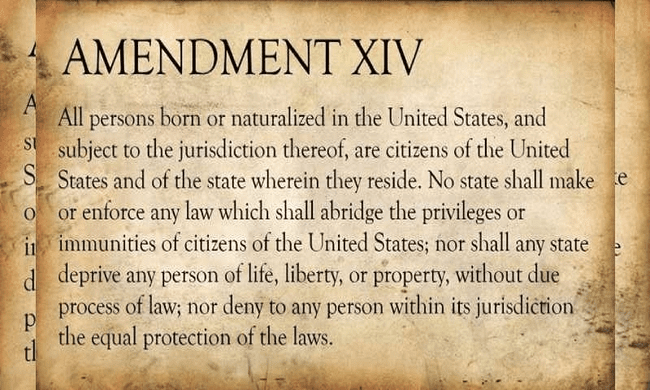
Understanding the 14th Amendment: A Pillar of American Democracy
The 14th Amendment to the United States Constitution stands as a crucial landmark in the history of American civil rights and legal equality. Ratified in 1868, it was designed to address issues stemming from the Civil War, particularly the status and rights of formerly enslaved individuals. This amendment has since become a cornerstone of constitutional law, influencing countless court decisions and shaping the landscape of civil liberties in the United States. In this article, we will explore the origins, key provisions, significant cases, and contemporary relevance of the 14th Amendment.
The Historical Context of the 14th Amendment
To fully appreciate the significance of the 14th Amendment, it is vital to understand the historical context from which it emerged. Following the Civil War, the United States faced immense challenges in reconciling the nation’s ideals of liberty and equality with its past of slavery and racial discrimination. The Reconstruction era sought to rebuild the South and integrate formerly enslaved individuals into society, but resistance to change was fierce.
As a response to the pervasive inequalities and injustices, the 14th Amendment was crafted, encapsulating the hope for a more equitable society. It aimed to provide citizenship to all persons born or naturalized in the United States, including former slaves, ensuring that they would have the same rights as other citizens. The framers of the amendment believed that this legal foundation would prevent states from enacting laws that discriminated against any group of people.
Key Provisions of the 14th Amendment
The 14th Amendment consists of five sections, each addressing different aspects of citizenship, rights, and state governance. The most notable sections include:
- Section 1 – Citizenship Clause: This section grants citizenship to all individuals born or naturalized in the United States, thereby overturning the Dred Scott v. Sandford (1857) decision, which had denied citizenship to African Americans. It establishes a clear definition of national citizenship that is not dependent on race or previous condition of servitude.
- Due Process Clause: This clause prohibits states from depriving any person of “life, liberty, or property, without due process of law.” It extends the protections of the Bill of Rights—originally applicable only to the federal government—to encompass the state governments, ensuring fair treatment under the law.
- Equal Protection Clause: One of the most powerful elements of the 14th Amendment, this clause mandates that no state shall deny to any person within its jurisdiction the equal protection of the laws. It serves as a foundation for many civil rights advancements, prohibiting discrimination based on race, gender, or other characteristics.
- Section 2 – Apportionment of Representation: This section adjusts the apportionment of congressional representation based on the whole number of persons in each state, penalizing states that disenfranchise eligible voters.
- Section 3 – Disqualification from Office: This section disqualifies individuals who have engaged in insurrection or rebellion against the United States from holding public office, a provision aimed at former Confederate officials.
Landmark Supreme Court Cases Influenced by the 14th Amendment
The 14th Amendment has been the basis for numerous significant Supreme Court cases that have defined civil rights in America. Here are a few pivotal rulings:
- Plessy v. Ferguson (1896): This infamous case upheld the constitutionality of racial segregation under the “separate but equal” doctrine, reflecting the challenges faced in applying the Equal Protection Clause. However, it created a precedent that would be challenged in later years.
- Brown v. Board of Education (1954): In a landmark decision, the Supreme Court unanimously ruled that racial segregation in public schools violated the Equal Protection Clause of the 14th Amendment. This case was a major turning point in the American civil rights movement, signaling the end of “separate but equal.”
- Roe v. Wade (1973): The Court ultimately recognized a woman’s right to choose to have an abortion as part of her right to privacy, drawing upon the Due Process Clause of the 14th Amendment. This decision has sparked ongoing debates and legal battles regarding reproductive rights.
- Obergefell v. Hodges (2015): This landmark case legalized same-sex marriage across the United States, reaffirming that the right to marry is a fundamental right protected by both the Due Process and Equal Protection Clauses of the 14th Amendment.
The Contemporary Relevance of the 14th Amendment
In today’s political and social climate, the 14th Amendment continues to play an essential role in shaping discussions about civil rights, immigration, and equality. Issues such as affirmative action, voting rights, and the rights of immigrants frequently invoke the principles established by this amendment.
Moreover, as the interpretations of the 14th Amendment evolve, so does its impact on legislation and policy. For instance, recent debates surrounding birthright citizenship and immigration reform highlight the ongoing relevance of the Citizenship Clause, questioning who qualifies for citizenship and the associated rights.
Activists and lawmakers alike often refer to the 14th Amendment when advocating for policies that promote equality and justice, illustrating the enduring power of its core principles. As movements continue to flourish, whether related to racial justice, gender equality, or LGBTQ+ rights, the 14th Amendment serves as a guiding light in the struggle for a more equitable society.
Conclusion
The 14th Amendment represents a profound commitment to the ideals of equality, justice, and individual rights that form the bedrock of American democracy. Its historical significance, coupled with its ongoing relevance, illustrates how the amendment has shaped the lives of millions and continues to guide legal interpretations and civil rights advancements today. As we face new challenges and opportunities, understanding the 14th Amendment helps us navigate the complexities of our shared pursuit of justice and equality for all citizens. In essence, the 14th Amendment is not just a piece of history; it is an active force that resonates throughout the fabric of American society, reminding us of the importance of protecting and upholding the rights of every individual.
















